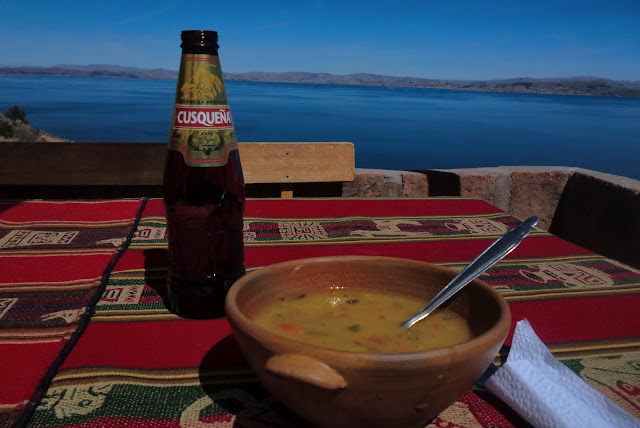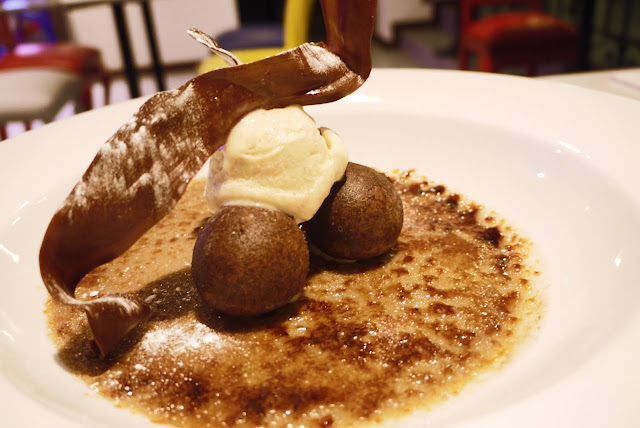Pocas veces he disfrutado de la comida y el paisaje al mismo tiempo como lo hice en mi viaje por las islas del Lago Titicaca. Esta vez voy a hablar de la pequeña isla de Taquile, en el lado peruano del lago.
There has been a few times I have enjoyed eating and admiring a landscape as I did through my journey to the Titicaca Islands. On this opportunity I will talk to you about Taquile, a small island on the peruvian side of the lake.
Si tienes la oportunidad de comer lo que comen los locales, hazlo nunca te arrepentirás. La dieta de la población de Taquile se base principalmente en cereales (quinua, kiwicha, cañihua), verduras que cultivan en las terrazas de cultivo de la isla y trucha del lago.
La sopa de Quinua la entrada perfecta para contrarrestar las noches frías del altiplano, una sopa contundente con un suave sabor a apio.
If you have the chance to eat as locals do, do it, you´ll never regret it. Taquile´s diet i s based on cereals (quinoa, kiwicha, cañihua), vegetables cultivated on the cropping platforms and andean trout.
The quinoa soup is the perfect entrée to counteract the cold Altiplano nights, so warm, vigorous with a mild celery touch.
Hora del plato fuerte, la trucha andina taquileña, preparada a la plancha con condimentos locales, un plato muy sencillo pero exquisito.
Main course time, the Taquile grilled Andean trout. Simple but exquisite.
Y para terminar un mate de muña, una hierba local muy parecida a la menta. Es utilizada por la comunidad como medicina para el dolor estomacal y de cabeza. Muy recomendable para el mal de altura, si no te gusta mucho el mate de coca esta infusión puede ayudarte los primeros días de aclimatación.
And to finish this delightful meal, a local herb very similar in taste to mint, called muña. It is used by the community as medicine to treat stomach disorders and headache. It is highly recommended to prevent altitude sickness. If you´re not fond of coca tea, try muña it will help you pass by the first days of acclimatization.















































